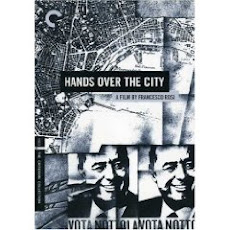And of course - he alternates between the two halves of the film. Part 1 starts with the kinetic train robbery and Mabuse's dazzling tour of the city, before slowing down for later scenes; Part 2 starts with most of the characters still - usually brooding, haunted, maybe drunk... And much of the early part of the second film retains that slower pace - slow action (lots of talk), slow movement, slow cutting... These are interspersed with action - and of course the the action comes more frequently as the film progresses... a pattern appearing in most of the segments of the film.
Take this sequence near the beginning of the second film: starting with Count Told visiting the state prosecutor, telling him his story (cheating at cards, his wife has left him), cutting to Mabuse's place and the aftermath of a drunken party, then to the Countess, Mabuse's prisoner - Mabuse visits her and threatens her - but Told calls Mabuse, seeking psychiatric help... The sequence I'm thinking of lasts about 5 minutes - but shows, in that five minutes, the variations in pacing, and general acceleration I mean. In fact - thanks to the magic of iMovie - we can see the cuts (you may have to click on it to see it clearly), see the shots getting shorter as the sequence progresses:

Basically - we start with a 35 second shot of Told and Von Wenk, followed by a 22 second shot of Told (including an inserted dialogue), then a series of somewhat shorter shots - 12 seconds, 3, 11 - of the countess waking up and Mabuse's party; then a 52 second shot of the party, 44 seconds of Told and Von Wenk (including dialogue, though always cutting back to the basic two shot), then a series of shots of Mabuse and the countess, many of them involving movement, as he chases her around the room - 7 seconds, 17 (more on this below), 3, 4 (Mabuse), a 6 second dialogue card, 4 (shot of the countess - which is exactly the same length and the preceding shot of Mabuse), 8, 2, 3, 2 - another dialogue card (3 seconds) - 6, then a 17 second shot of Mabuse coming to the phone...
That's the overall pattern of the sequence - starting long, with slow movement, no action, then growing faster, both cutting and movement, before slowing down as the next sequence begins. The same pattern occurs within the shots, during the direct confrontation between countess and Mabuse. She has been unconscious - she wakes up in his house, locked in a room. He comes in from his drunken bash, thinking to molest her, she fights him off, tries to escape... The centerpiece of this sequence is a 17 second shot that recapitulates the overall pacing of the sequence: starts slow, explodes into action, stops - then explodes again. Here it is:
It starts, as many shots do, with a very quick dissolve:

This reveals Mabuse leaning over the countess - they hold this pose for about 5 seconds:

Then the countess makes a break for it, and Mabuse grabs her:

They struggle - and come to a halt, and hold this position (a very tense, violent pose, actually, Mabuse basically pinning her there) for a few second:

...before she makes another break...

... which leads to the cut - to a blank door, and the countess bursting into the frame:

It's a powerful effect - the alternation of long and short shots, of slow, deliberate movements and gestures and quick, violent movements; integrated with the variations in shot scales - long shots and closer shots alternating, shots of big spaces and tight spaces; even the varying transitions - short dissolves, longer dissolves between shots, alternating with abrupt cuts; and the variations on how the cuts come - cuts to empty spaces that people jump into, say... Everything aimed at generating tension, and doing it...
























